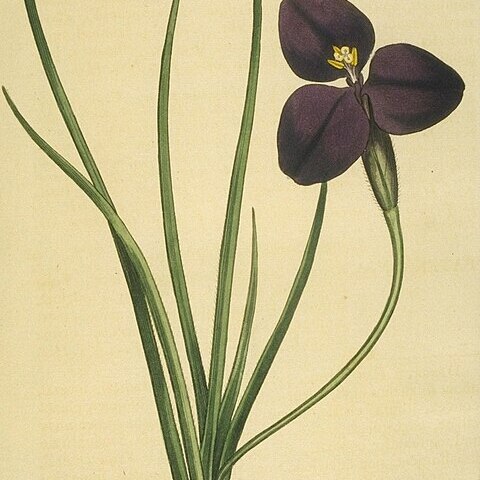Perennial herbs with basal leaves, rarely undershrubs, evergreen except Patersonia babianoides . Rootstock a short rhizome, usually woody, rarely corm-like. Leaves equitant, usually linear or ensiform. Scape erect, terete, unbranched, leafless, but often clasped at base by innermost leaf. Inflorescence capitate, with an involucre of 2 opposite spathes enclosing two 1-6-flowered rhipidia separated by shorter bracts. Flowers actinomorphic, sessile, fugacious, blue-violet, rarely white or yellow, each with a scarious bracteole. Floral tube filiform, ±included in bracts. Sepals free, broad, spreading. Petals very small, erect. Stamens inserted at apex of tube; filaments exserted, partly or completely connate; anthers basifixed, yellow; connective triangular. Style filiform, unbranched, exceeding anthers; stigmatic lobes 3, equal, flattened, free and obovate to cuneate or almost fully fused, papillose on upper surface. Capsule sessile, ±included. Seeds numerous, often arillate.
More
Caespitose to rhizomatous herbs or undershrubs. Inflorescences terminal, in few-flowered contracted cymes, each with 2 spathes. Flowers actinomorphic, sessile, bluish to purple, exceptionally yellow or whitish, Tepals dimorphic, united into a long and filiform tube at the base, the inner lobes inconspicuous. Stamens 3, united into an undivided or trifid tube. Ovary cylindrical, lanate; style entire; stigmas 3, subfoliaceous, alternating with the outer tepals. Capsules loculicidal, included. Seeds angular or ellipsoidal.
Open, low shrubberies, heaths and sedge-lands, 2000-3500 m.

